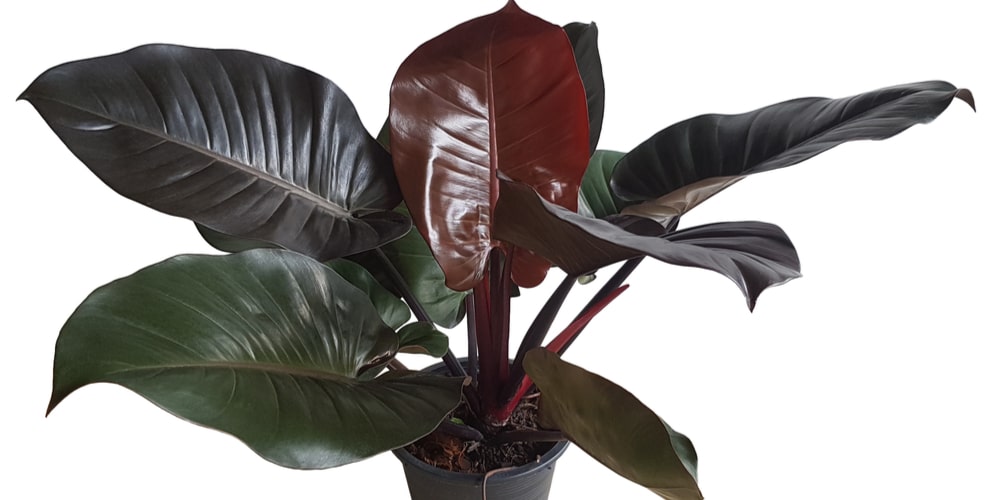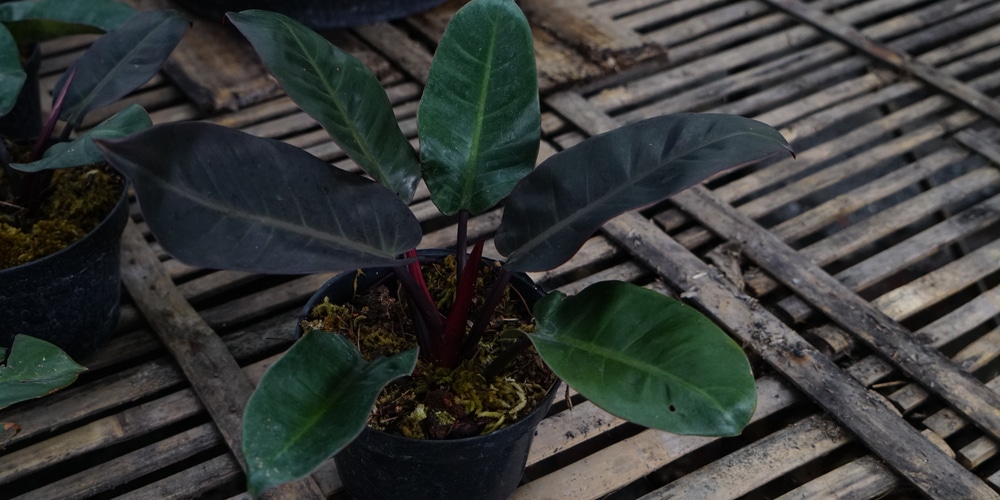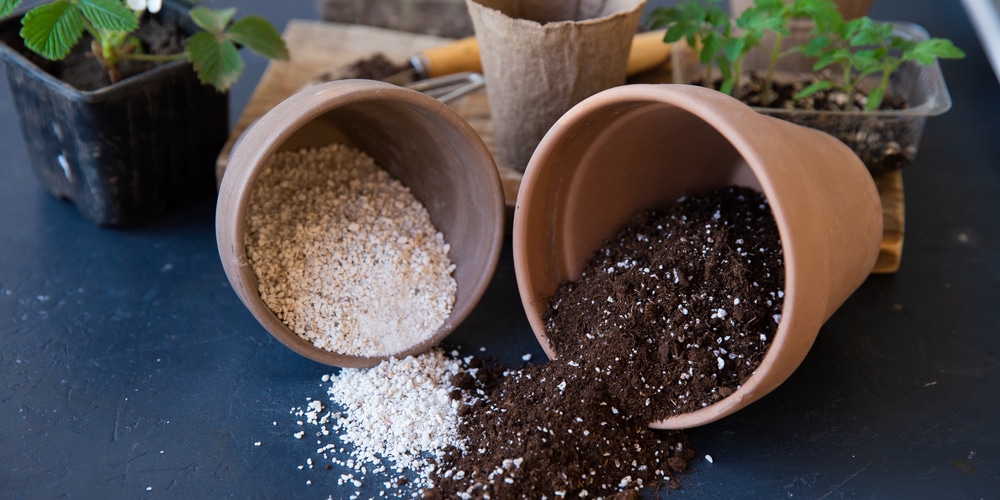Black Cardinal Philodendrons have beautiful long leaves, which are a deep chocolate brown to black color. These plants are part of the Araceae family and are native to the Brazilian rainforest and other parts of South America.
When new leaves form on the Black Cardinal plant, they are a light bronze color. The foliage darkens as the leaf matures until it looks almost black. Young plants also have green hues and darken as they reach maturity.
Black Cardinal Philodendrons are easy to care for as they are considered low maintenance. These plants are excellent for beginners as they will thrive with basic care. Let’s look at how to grow and care for a Philodendron Black Cardinal.
What is a Black Cardinal Philodendron?
Philodendron Black Cardinal plants are fast-growing houseplants that are tropical in nature. They are relatively large and can grow up to 3 Feet when conditions are ideal. These plants are evergreen perennials that can grow up to 1.5 feet wide. They are part of the Aeraea family and are native to Brazil, Ecuador, and Peru. The leaves of a fully grown wild plant can reach up to a foot long and have a width of 8 inches. Specimens kept as houseplants are generally slightly smaller.
Philodendron Black Cardinal are toxic to humans and animals if ingested. These plants contain calcium oxalate crystals that can cause vomiting and swelling of the throat and lips in people and pets. Some people end up with skin irritation after handling the plant. It’s best to keep all varieties of philodendron out of the reach of young children.
Sunlight
Philodendron Black Cardinal plants should be placed in bright indirect sunlight. If your plant isn’t getting enough light, it’s likely to grow leggy. Overexposure to light will cause many leaves to turn yellow. If you leave your plant in the full sun, it may suffer from sunburn.
If your plant has one or two yellow leaves, this is more likely to indicate that the leaves are old and have died. You can simply trim these off, as this is nothing to worry about.
Watering Requirements
Philodendron Black Cardinals require regular watering. These plants do best if the first inch of topsoil is left to dry out completely. You can test the soil with your finger before watering. Water your plant thoroughly and let any excess water drain away. Most people find their plant needs to be watered at least once a week during the growing season. A sign that your plant needs a drink is that its leaves begin to wilt.
Temperature
Philodendron Black Cardinal grow well in temperatures of between 65 and 78˚F. These plants are relatively sensitive and will die if the temperature is too cold. It would help if you were careful not to place your plant in a draft or near the air conditioning.
If you’ve been growing your Philodendron Black Cardinal outdoors, you should move it inside if you live somewhere where frost is forecast.
Humidity
Philodendron Black Cardinal plants like medium humidity and should be misted daily in the spring and summer. You may like to move your plant into the bathroom or kitchen as these rooms naturally have higher humidity. Alternatively, keep your plant in a greenhouse for extra warmth and humidity.
Other ways to increase humidity for your tropical plant include grouping plants together, using a water tray or a humidifier. If you place a tray of water and pebbles underneath your Philodendron Black Cardinal, its leaves will receive moisture as the water evaporates.
Fertilization
It’s best to fertilize your Philodendron Black Cardinal once a month throughout the spring and summer months. Feralization can be reduced to every two months in the fall and winter. You can either use a standard houseplant fertilizer at half the recommended strength or buy a formula that’s been designed specifically for tropical plants.
If your plant’s growth is slow in the growing season, this is a sign that it’s not getting enough nutrients and should be fertilized. Philodendron Black Cardinal can be affected by deficiencies of magnesium or calcium in the soil. Nutrient deficiencies will show up in your plant as dull, pale leaves.
It’s particularly important that your plant has enough calcium as the vitamin helps the plant absorb other nutrients. To improve calcium levels in the soil, you can add some crushed eggshells or use a calcium supplement.
Soil
Philodendron Black Cardinal plants grow well in rich soil that’s well-draining. You can use a standard house plant premix and add some peat moss and perlite. Alternatively, you may like to use tropical houseplant soil. Getting the drainage right will stop your plant from suffering from root rot. Philodendron Black Cardinal are fast-growing and can be re-potted each growing season. It’s best to report your planting the spring using a pot about two inches larger than your current pot. Give your plant some fertilizer and water well after repotting.
Pests
Like most philodendrons, the Black Cardinal is relatively hardy when it comes to pests. These plants can be affected by aphids and mealybugs. It’s a good idea to get into the habit of checking for insects regularly. If you notice any pests or eggs, you can wipe them off your plant with a damp cloth. Showering your plant will also help remove insects. If an infestation has occurred, you can spray your plant with an insecticidal spray to get rid of insects.
Conclusion
Philodendron Black Cardinal plants are a beautiful tropical species with dark chocolate to black foliage. These plants are unique and look great in homes and offices. They can be kept in the kitchen or bathroom for increased humidity.
The Philodendron Black Cardinal is low maintenance and easy to look after. It should be watered regularly and placed in indirect sunlight. You should also regularly fertilize your plant throughout the growing season to help it thrive.


